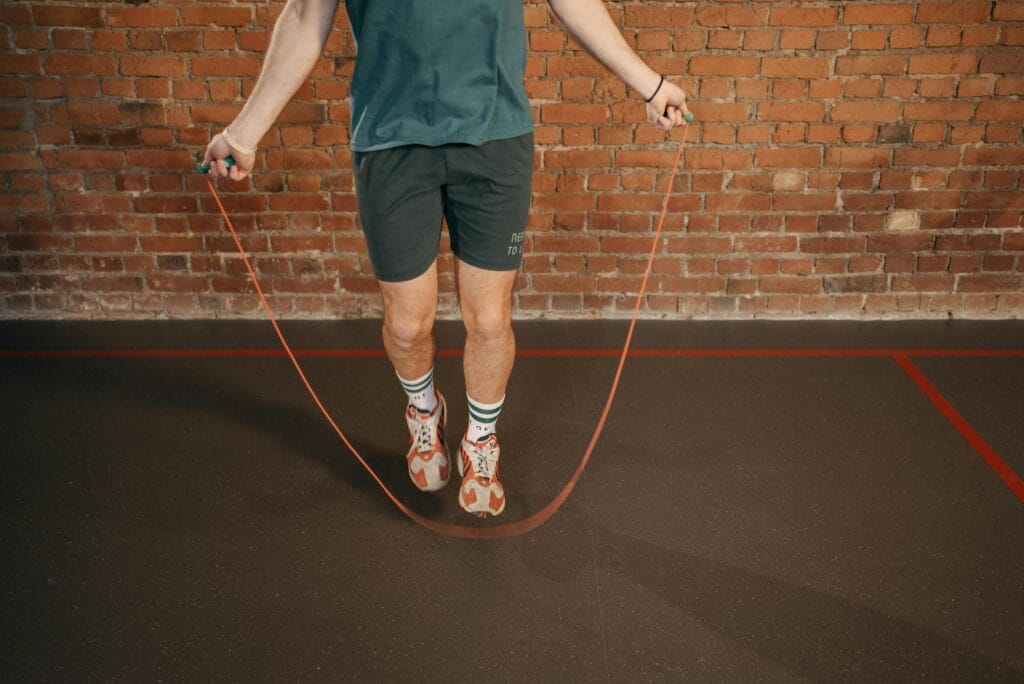FREE SHIPPING OVER $50
Ditch the Treadmill: These 8 Exercises Torch More Calories Than Running

The treadmill has long been the king of cardio. It’s the go-to machine when you want to torch calories and feel like you’ve accomplished something—we’ve all spent hours logging miles, believing that steady-state running is the gold standard for fat loss. However, if your primary fitness goal is maximum calorie burn in minimum time, it’s time to retire the monotonous jog. Running, while a great foundational exercise, simply can’t compete with the metabolic fire ignited by certain full-body, high-intensity movements.
It’s time to move beyond the track. We’re focusing on efficiency, total muscle recruitment, and the powerful “afterburn” effect. These 8 exercises engage more muscle groups, elevate your heart rate faster, and demand so much energy that they naturally burn more calories than running—often in a fraction of the time. Get ready to shake up your routine, protect your joints, and ditch the treadmill for better, faster results.
Why Running Isn’t Always the Calorie King
Running is a fantastic exercise, but it has metabolic limitations that hold it back from true “calorie-torching” status. Steady-state running tends to be a repetitive, linear movement that mainly targets the lower body. Once your body adapts to that pace, your metabolism settles into a plateau.
The biggest factor running lacks compared to the following 8 exercises is the EPOC effect (Excess Post-exercise Oxygen Consumption). This “afterburn” means your body continues to burn calories long after you finish your workout as it works to restore oxygen levels and repair muscle damage. High-intensity, full-body exercises generate a much higher EPOC, making them far superior for total daily calorie burn and boosting your overall metabolic rate.
The Core Principle: How to Torch Calories Faster
To burn more calories than running, you need a routine that recruits massive amounts of muscle mass and pushes your heart rate to near-maximal effort in short bursts. The following 8 exercises achieve this by employing two core principles:
- Full-Body Compound Movement: Engaging the legs, core, and upper body simultaneously forces the heart to work harder to pump blood to all those muscles.
- Explosive/Anaerobic Effort: High-Intensity Interval Training (HIIT) spikes the heart rate, causing maximum metabolic disruption and triggering the powerful EPOC effect for hours afterward.
The 8 Exercises That Obliterate Running’s Results
These exercises focus on maximizing muscle recruitment and intensity, guaranteeing a higher calorie expenditure and afterburn than a typical mile on the treadmill.
1. Kettlebell Swings: The Full-Body Powerhouse
The kettlebell swing isn’t just a lower-body move; it’s an explosive, full-body movement driven by the hips and posterior chain (glutes and hamstrings), while the core, back, and shoulders stabilize the weight. The total muscle recruitment required for a 20-minute kettlebell circuit can easily surpass the energy cost of steady running. It quickly elevates your heart rate without the joint impact.
2. Burpees: The Cardio-Strength Hybrid
Everyone dreads the burpee because it’s effective. It moves you quickly from a vertical plank position to an explosive jump, engaging virtually every major muscle group—chest, arms, shoulders, quads, and core—in rapid succession. Doing burpees for just a few minutes in a HIIT format spikes the heart rate into the maximum fat-burning zone faster and keeps your metabolic rate elevated longer than most aerobic exercises.
3. Jumping Rope: The Efficiency King
Jumping rope requires constant, fast-twitch muscle engagement in the calves, core stabilization, and active arm movement. It’s a low-cost, high-yield cardio exercise that typically achieves a higher average heart rate than moderate running. Furthermore, the rhythmic nature improves coordination while forcing your entire body to stabilize, making it a surprisingly intense full-body workout.
4. Rowing Machine: Low-Impact Calorie Torch
The rowing machine is often cited as the ultimate calorie-torching piece of equipment because it uses 86% of the body’s musculature, involving the legs, core, back, and arms. Unlike running, which is primarily legs, rowing distributes the work evenly. A minute of max-effort rowing is comparable to a sprint, but without the joint impact, making it ideal for continuous, high-intensity efforts.
5. Hill Sprints and Sled Pushes: Max Effort, Max Reward
While technically a form of running, sprinting (especially uphill) is metabolically different from steady-state jogging. It’s an anaerobic effort that triggers maximal EPOC. Similarly, sled pushes or pulls recruit the largest muscles in your body (glutes and quads) for an intense effort, forcing a massive oxygen debt that elevates your fat loss potential significantly beyond any standard run.
6. Plyometric Box Jumps: Explosive Power
Exercises like box jumps and squat jumps require explosive power and full leg muscle recruitment. The eccentric (landing) and concentric (jumping) phases of these plyometric jumps create significant muscle micro-tears, demanding a high amount of energy for repair afterward, which feeds directly into the EPOC effect. This muscular stress is far greater than the steady impact of a jog.
7. Battle Ropes: The Metabolic Shockwave
Often found in HIIT zones, battle ropes are a phenomenal upper-body and core metabolic conditioner. Sustaining the whipping, wave, or slam motion demands constant contraction from your back, shoulders, and core, driving your heart rate up aggressively. Because the effort is dynamic and demands continuous upper-body output, it rapidly elevates your metabolic rate for maximum calorie torching.
8. Stair Climber/StairMaster: Vertical Burn
Using a StairMaster or running up real stairs forces your body to constantly lift its weight against gravity, focusing maximum load on the largest muscles in your body (glutes and hamstrings). This vertical movement requires more energy per step than running on a flat surface. Ten minutes on the StairMaster can often achieve a heart rate and energy expenditure equivalent to 20 or 30 minutes of moderate-paced treadmill running.
Building the Ultimate Fat-Loss Routine
Now that you know the exercises that torch more calories than running, the key is integrating them efficiently into your fitness routine. Don’t try to do all eight at once. Instead, adopt a HIIT approach using these compound moves:
The 20-Minute Calorie-Torching Circuit: Choose 4 of the 8 exercises (e.g., Kettlebell Swings, Burpees, Rowing, and Box Jumps).
- Perform each exercise for 40 seconds at maximum intensity.
- Rest for 20 seconds.
- Move immediately to the next exercise.
- After completing all 4 exercises, rest for 1 minute.
- Repeat the entire circuit 4 times.
This kind of intense, varied, full-body workout not only prevents boredom, which is a major factor in quitting a routine, but also keeps your body guessing, preventing the metabolic plateau often associated with continuous treadmill use. You will spend less time exercising and more time enjoying the lingering effects of a boosted metabolic rate and superior fat loss.
Final Thoughts
Ultimately, the best exercise is the one you will stick with, but when the goal is to burn more calories than running and maximize your time investment, the science is clear. Ditch the treadmill monotony and introduce these high-efficiency movements into your life. Your joints and your results will thank you.
Related Article
- Motivation Is A Myth: Use This 5-Minute System To Build Instant Workout Discipline
- Pilates Trainer Drops Her Go-To 5-Minute Core Workout—And It’s All About the Weights
- This Bodyweight Move Builds a Stronger Backside Than Deadlifts—And Boosts Flexibility Too
- These 5 Pelvic Floor Exercises Can Transform Your Core, Bladder, and Bedroom—And Most Men Have No Idea
- Want Bigger Glutes and Quads? Science Reveals the Exact Rep Ranges That Actually Work



